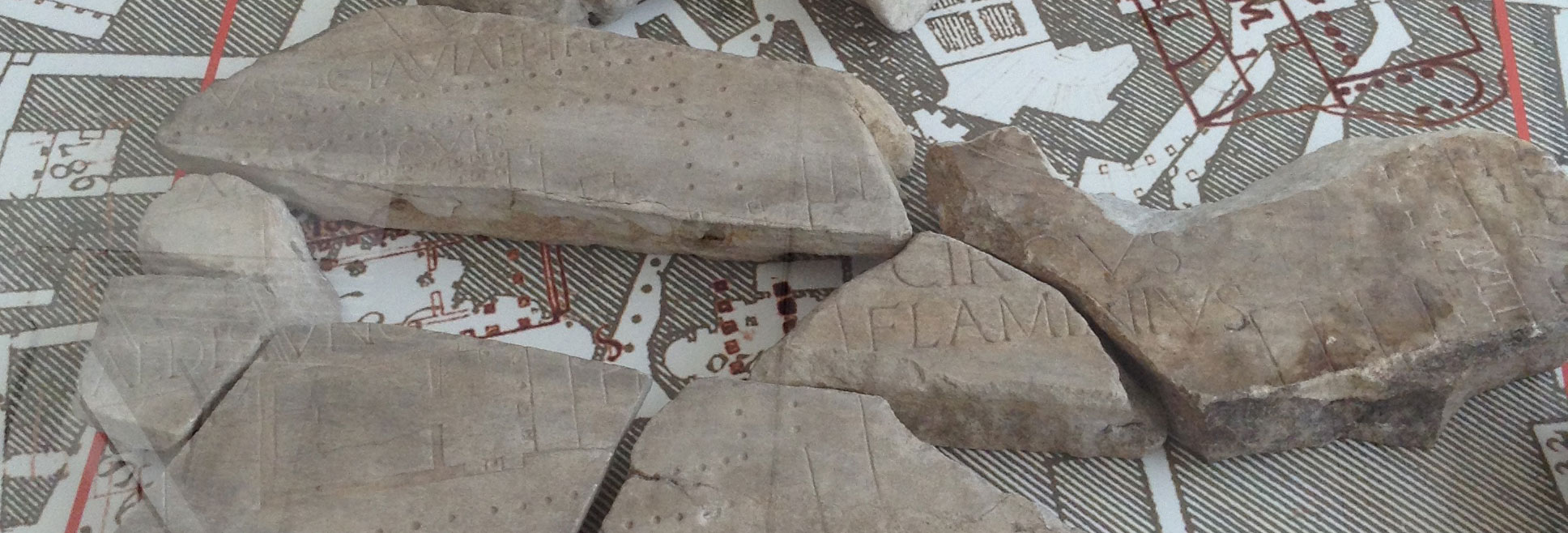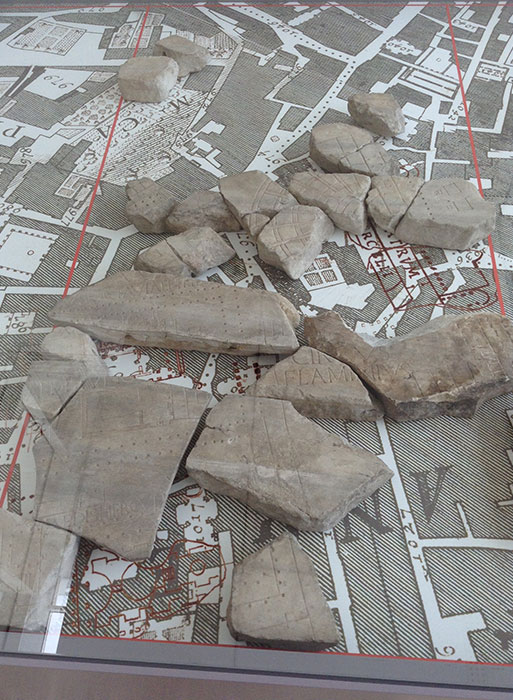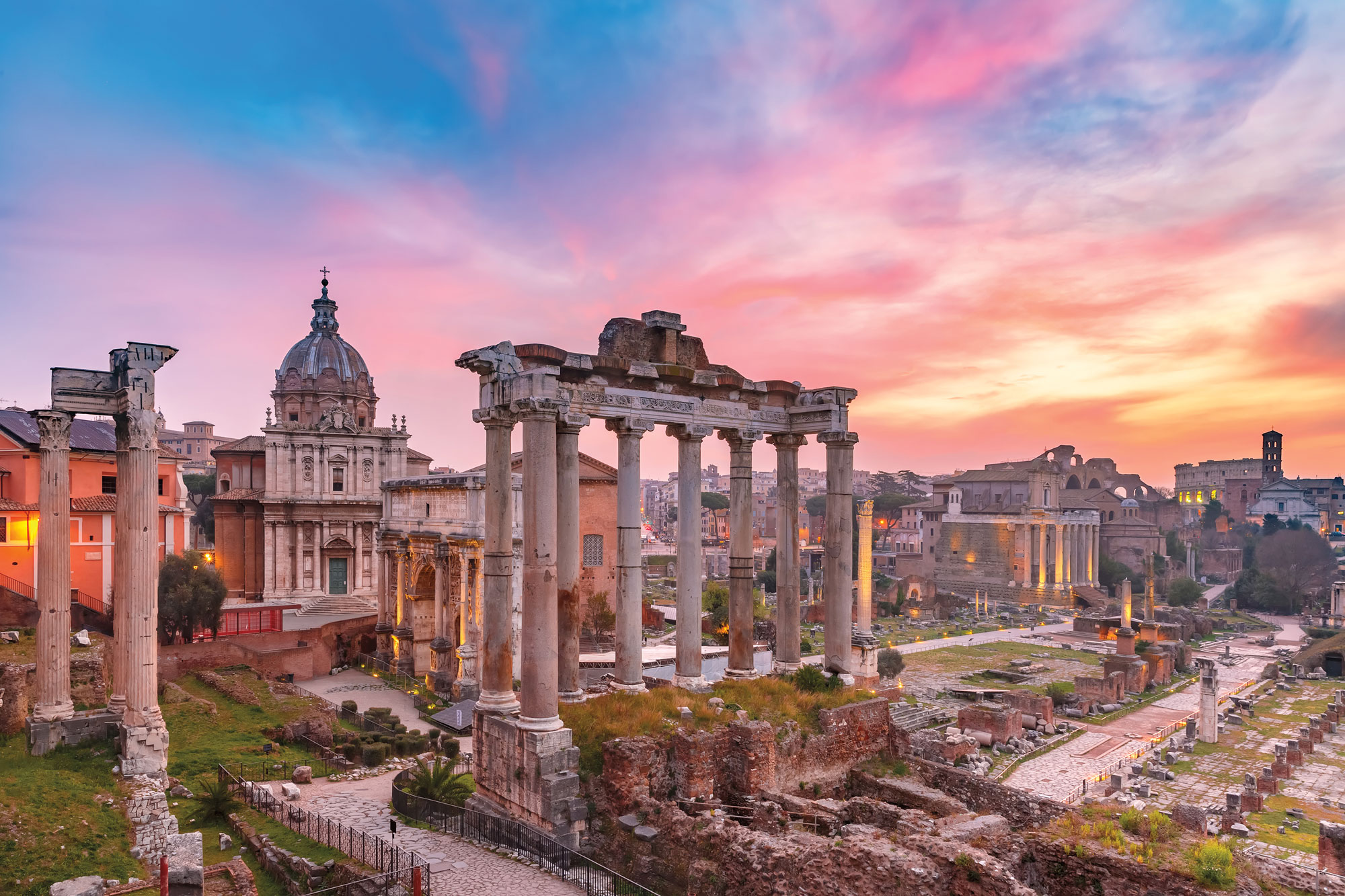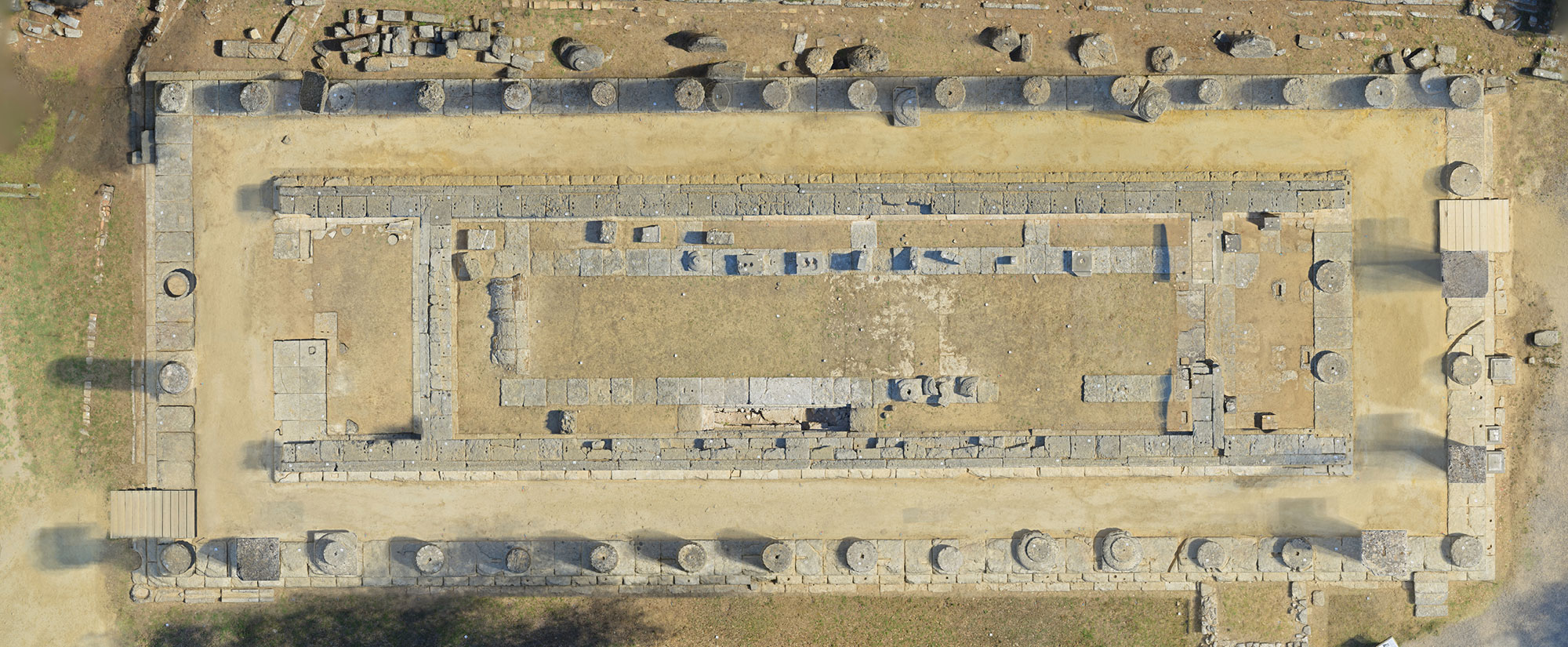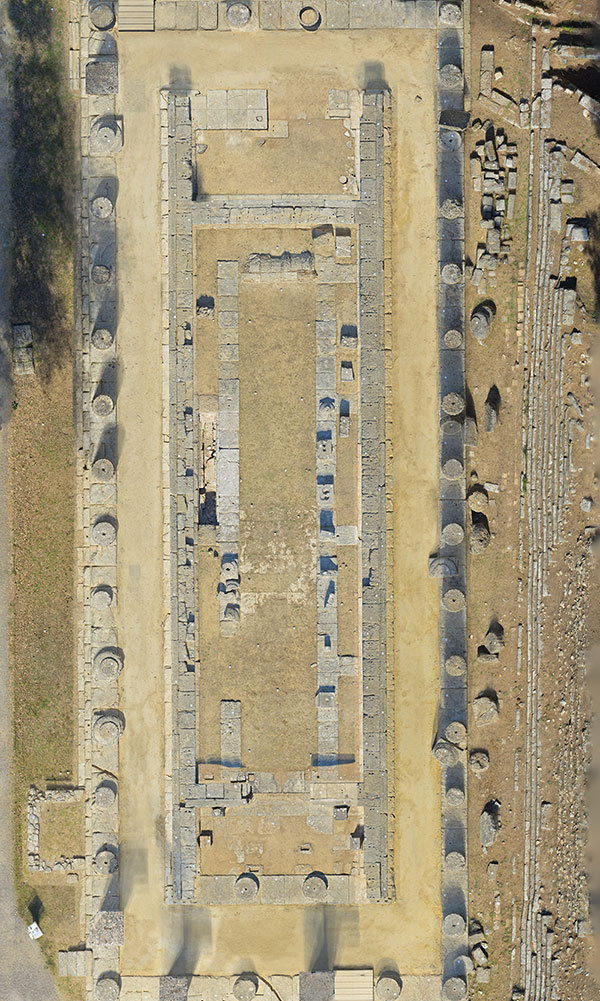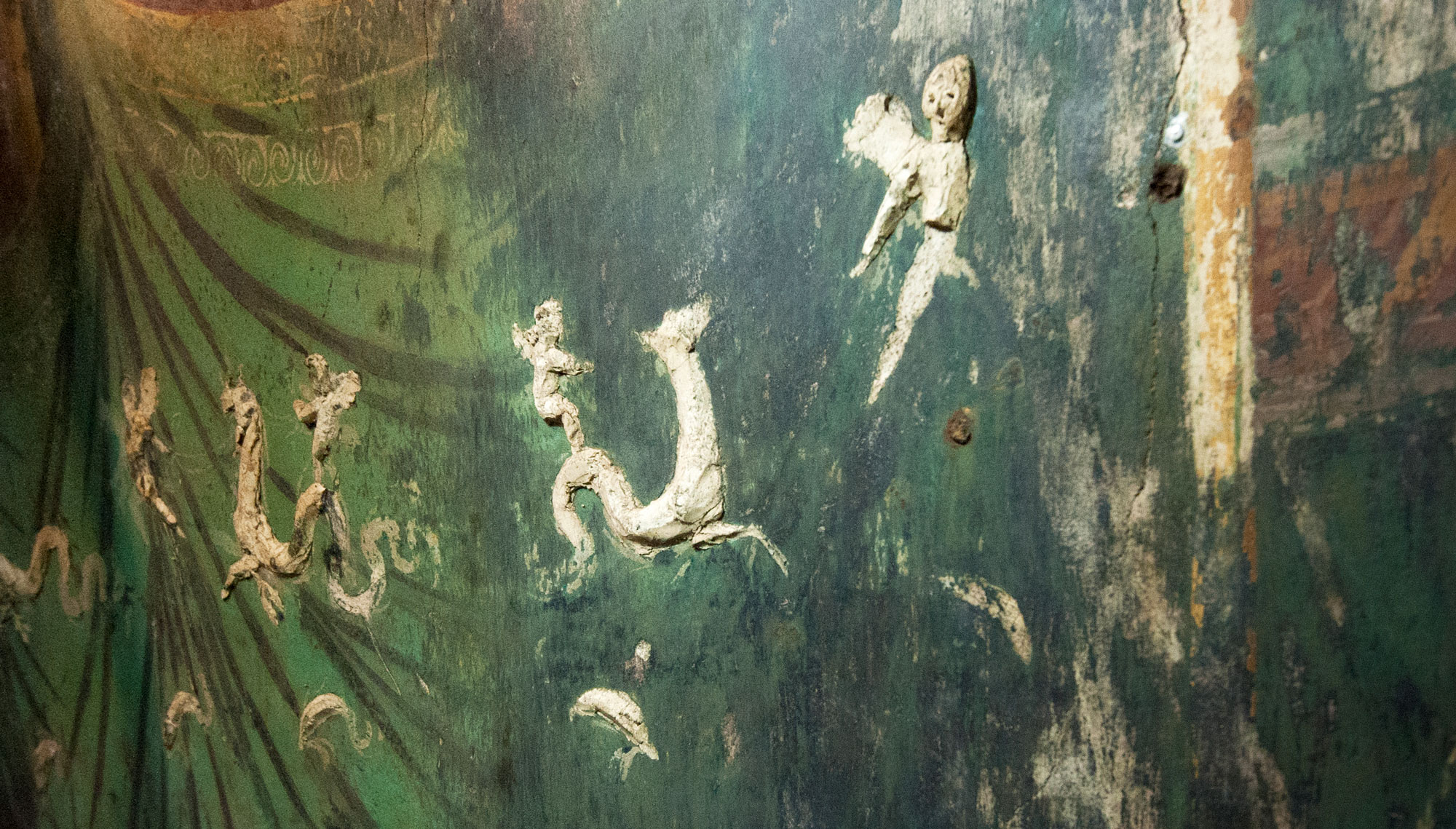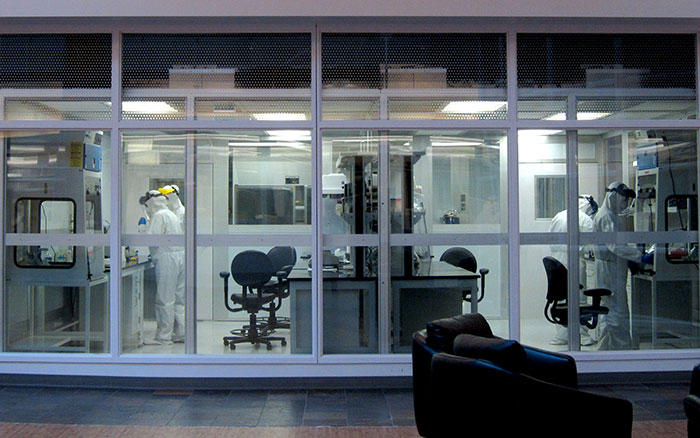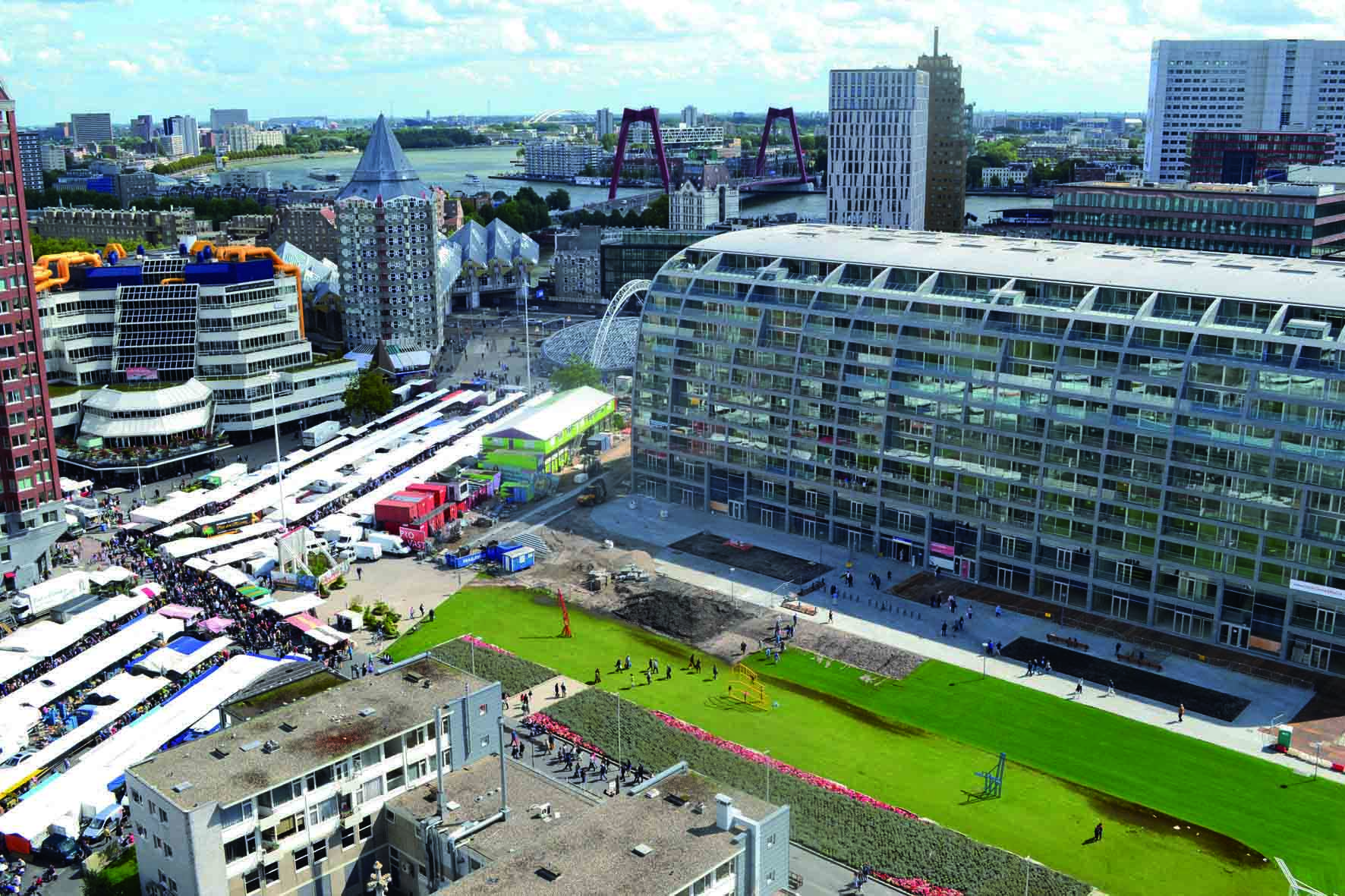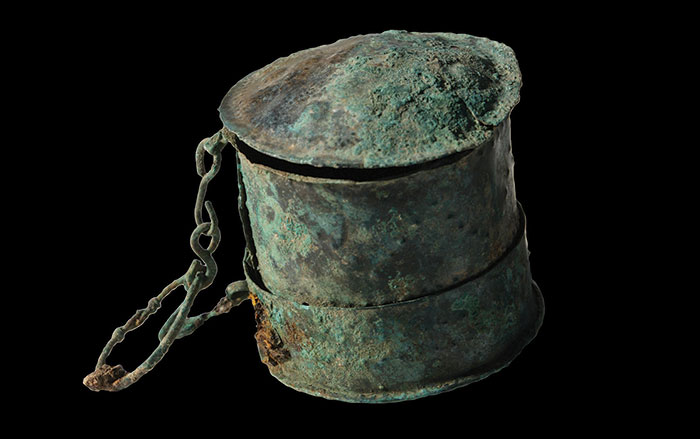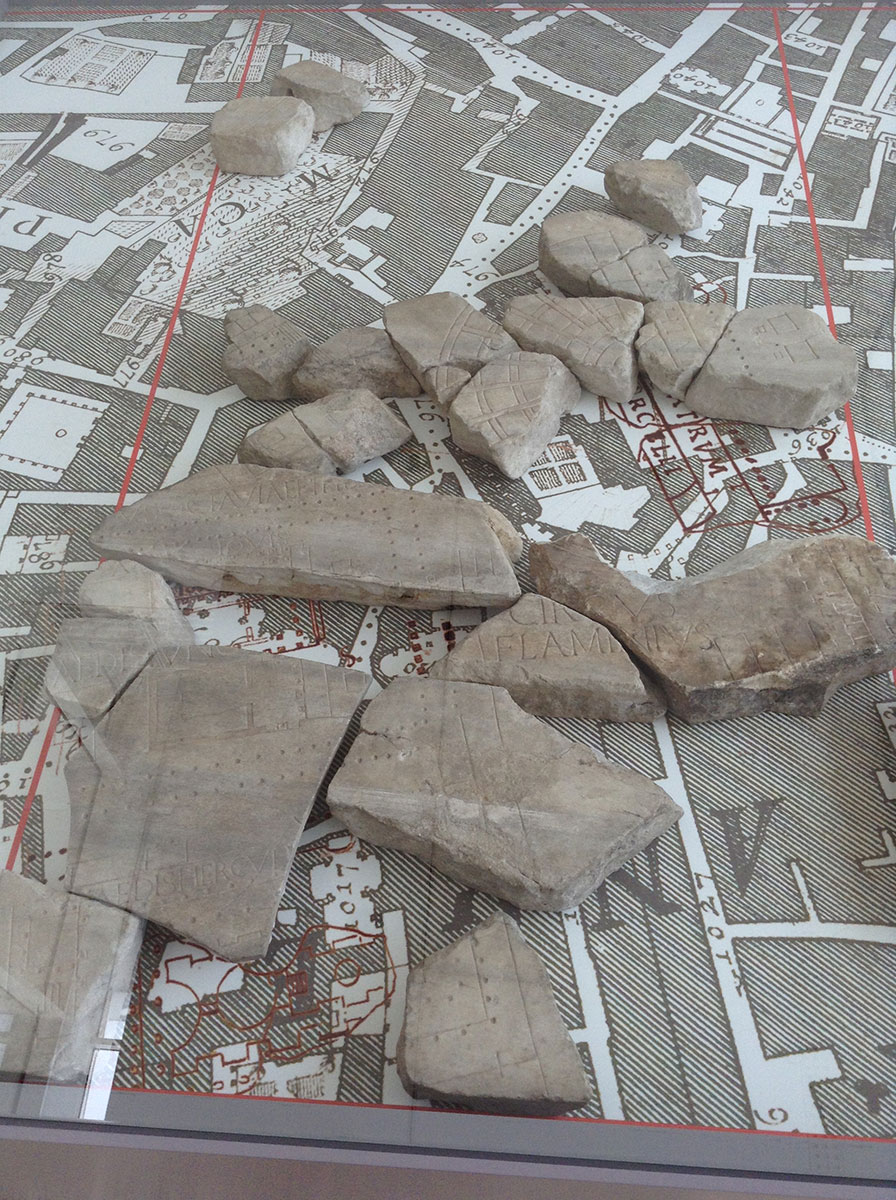
For the past several hundred years, historians and archaeologists have been doggedly working to solve one of the world’s largest jigsaw puzzles: the Forma Urbis Romae. Sometimes known as the Severan Marble Plan, the Forma was an enormous marble map of ancient Rome created between the years A.D. 203 and 211. Beginning in the fifth century, as the map fell into disuse, it was broken up into thousands of pieces, which were subsequently scattered throughout the city. Scholars have been retrieving the map’s fragments from locations around Rome and attempting to determine their original positions for the past 500 years. Reassembling the map is slow, painstaking work, further complicated by the fact that thousands of fragments are still missing. However, authorities from the Capitoline and Vatican museums in Rome recently announced the discovery and identification of an important new section of the map, perhaps offering new insights into the topography of the ancient city.
The Forma Urbis Romae was created under the reign of the emperor Septimius Severus (r. A.D. 193-211). Measuring 60 feet by 43 feet, the map was incised onto 150 marble blocks arranged in 11 rows, and represented an area of over five square miles at a scale of 1:240. An incredibly detailed plan of Rome, it reproduced every building, house, shop, and monument in the smallest detail, even including staircases. The Marble Plan was originally on display in a room in the Temple of Peace in the Imperial Fora. The wall where the map was hung survives today as part of a complex of buildings belonging to the Church of Saints Cosmas and Damian. A series of holes in the wall reveals where the individual marble slabs were attached with metal clamps. The Marble Plan was dismantled throughout the Middle Ages, and large chunks of it were reused in building projects throughout the city. Although around 1,200 fragments have been salvaged to date, experts estimate that only 10 to 15 percent of the original work survives. According to Stanford University professor Jennifer Trimble, even though the Marble Plan is only partially reconstructed, it provides scholars with new and unique information concerning the layout and organization of ancient Rome. “The Plan itself is vitally important because it is our only source for the urban fabric of Rome,” she says. “Standing ruins of major monuments and keyhole excavations throughout the city have given us individual details, but the modern city overlies the ancient remains and makes it impossible to see how different kinds of spaces and buildings worked together, or what particular streets and neighborhoods were like.”
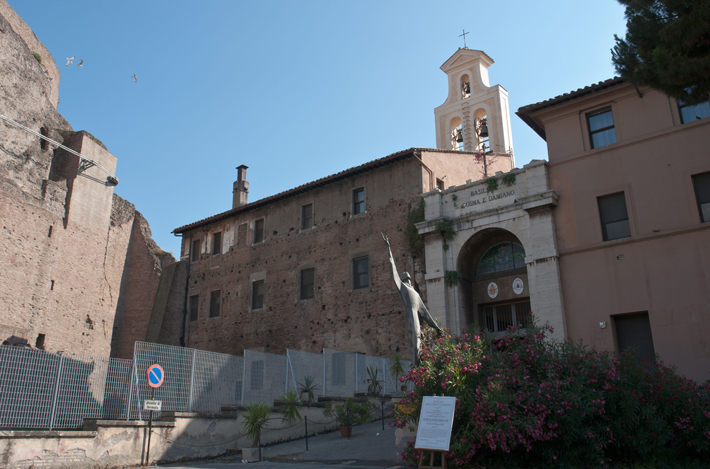
The newest fragment of the Forma Urbis Romae was discovered during construction work on the Palazzo Maffei Marescotti, which is owned by the Vatican. The piece corresponds to an area west of the Roman Forum known in modern times as the Ghetto. Researchers were able to pinpoint where it belongs on the overall plan because the new marble pieces contain parts of the Theater of Marcellus and the Circus Flaminius, monuments known to have been located in that neighborhood. Not much archaeological evidence of the Circus Flaminius survives, so the fragment will help experts better understand its layout and function. Because of the Forma Urbis Romae’s resemblance to Roman cadastral plans, which are property surveys, some scholars believe that it may have been used for administrative purposes by the urban prefects. However, others suggest that it may have simply been an elaborate decorative showpiece. “The best explanation,” says Trimble, “is that it was created as a spectacular monument that showcased the imperial city and detailed cartographic knowledge about it.”


